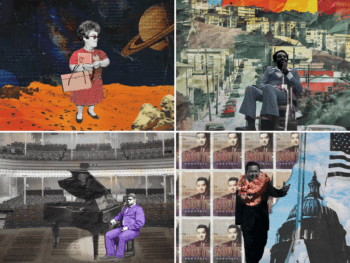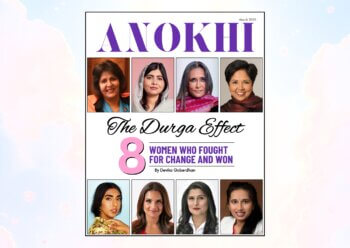
More South Asians are going against the cultural norm and turning to seniors’ homes when it comes to care for their elders.
When Rohan* and Tanya* first brought Rohan’s 65-year-old mother from India to New Jersey, she was very excited. Anu* spent her time taking care of her grandkids and helping with the family home. “It was really nice and we loved having her around, especially so that she could spend more time with our two daughters,” Tanya says.
Then Anu’s health started failing. “She started having memory loss, and developed a heart condition, diabetes . . . It was rough going and she needed round-the-clock care,” Rohan says.
Typical of South Asians, Rohan and Tanya initially tried to take care of Anu themselves. “It’s programmed into you,” Rohan says. “Family sticks together through everything and it’s your responsibility as a child to take care of [your] parents when they get old.” So the couple started working alternate shifts from home, but Anu’s condition worsened.
In the end, Anu herself suggested she go into a seniors’ residence. “I didn’t want to be a burden on them,” she said. “And they both have a job . . . They couldn’t afford to stay at home.” As a middle-class family in India, Rohan and Tanya would have been able to get relatively inexpensive hired help. But with higher labour costs in the U.S., they couldn’t afford round-the-clock care at home — even with two incomes.
Putting seniors in a home is a hard sell to the South Asian community, which subscribes to an ancient model of parental devotion. But attitudes are shifting with now second- and third-generation South Asians adapting to North American values, especially as more women have moved away from being stay-at-home moms to leading well-established careers.
“Our family was initially so upset by maa ji’s (mother’s) decision,” Tanya says. “We felt like we were failing… That’s not how we do things in our culture.” But, Rohan added, they did feel some relief knowing Anu would get the care she deserved.
As the immigrant South Asian population ages, the need for culturally sensitive elder care programs has grown in Canada, the U.S. and the U.K. Several seniors’ homes have popped up in these countries that cater specifically to a South Asian clientele.
“Five years ago, South Asian seniors were hesitant to live away from their families but now these seniors are themselves wanting to go to long-term care facilities,” says Baldev Mutta, the CEO of Punjabi Community Health Services in Brampton. “I think the South Asian seniors are fed up with being mistreated and have also become aware of alternative living arrangements.”
Mutta has seen how elderly care can strain families. “Many elderly prefer to reside with a particular child of theirs,” he says. “This results in preferring one child over another, which in turn results in greater discord amongst siblings.” He’s also seen that elderly parents want to support the “not-so-well-off” child back home instead of the child living in Canada. “And this constant preferential treatment between children results in constant turmoil in families, pitting one family member against the other,” he explains. “The elderly are staying in Canada but all their pension is being sent back home to take care of their child.”
Those who support ethno-specific homes have reported success stories in which seniors with dementia “did very well” when they received culturally sensitive care, according to Sharon Koehn, a research associate at Providence Health Centre for Healthy Aging in Vancouver, in a briefing note to the Senate Committee on Aging. “What is most important is the provision of choices,” Koehn writes. “Ethno-specific homes should exist for those who need them, but seniors of a particular ethnic group should not be automatically streamed into these facilities.”
At the Guru Nanak Niwas assisted care centre in Surrey, British Columbia, South Asian seniors receive specialized care through both a day care program and a live-in program with 72 beds. Charan Gill launched the program in 1987 because he felt there was a need in the community. “Here, our seniors get the food they’re used to — like roti and dal — and all the nurses and attendants are fluent in languages like Punjabi and Hindi,” Gill says.
At Guru Nanak Niwas, residents pay 70 per cent of their after-tax income, which covers their monthly rental accommodation and hospitality services, including two meals and two snacks daily, weekly housekeeping, and a 24-7 on-site emergency response system. The complex is near a Sikh temple and within walking distance of shops and other amenities.
Some people argue against culturally sensitive care, fearing that it could lead to stigmatization or ghettoization, but Gill says that’s not the case. “At the end of the day, it’s understandable that you want to be around people who speak your language, understand your customs and culture, and eat the same food as you do,” he says.
* Name has been changed.
BY TAMARA BALUJA
PUBLISHED IN THE HEALTH & WELLNESS ISSUE, SUMMER 2013














































































































